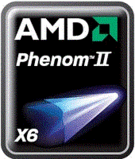I have the followings:
MB: Gigabyte GA-EX58-UD5
CPU: i7 920
Mem: Corsair TR3X6G1600C8D Dominator 6 GB@1600
HDD: 1 X Seagate 1.5 TB (win7-64 boot drive) & 2 X 2TB Hitachi in RAID0
I want to optimize the raid0 array as storage for Windows Media Center HDTV recordings and for HD video processing (e.g., mpeg-2 -> mpeg-4 transcoding, etc.).
What is would be best for the RAID 0 stripe size? (128K is default)
What would be optimum for the RAID 0 format block size?
Thanks!
MB: Gigabyte GA-EX58-UD5
CPU: i7 920
Mem: Corsair TR3X6G1600C8D Dominator 6 GB@1600
HDD: 1 X Seagate 1.5 TB (win7-64 boot drive) & 2 X 2TB Hitachi in RAID0
I want to optimize the raid0 array as storage for Windows Media Center HDTV recordings and for HD video processing (e.g., mpeg-2 -> mpeg-4 transcoding, etc.).
What is would be best for the RAID 0 stripe size? (128K is default)
What would be optimum for the RAID 0 format block size?
Thanks!



Comment